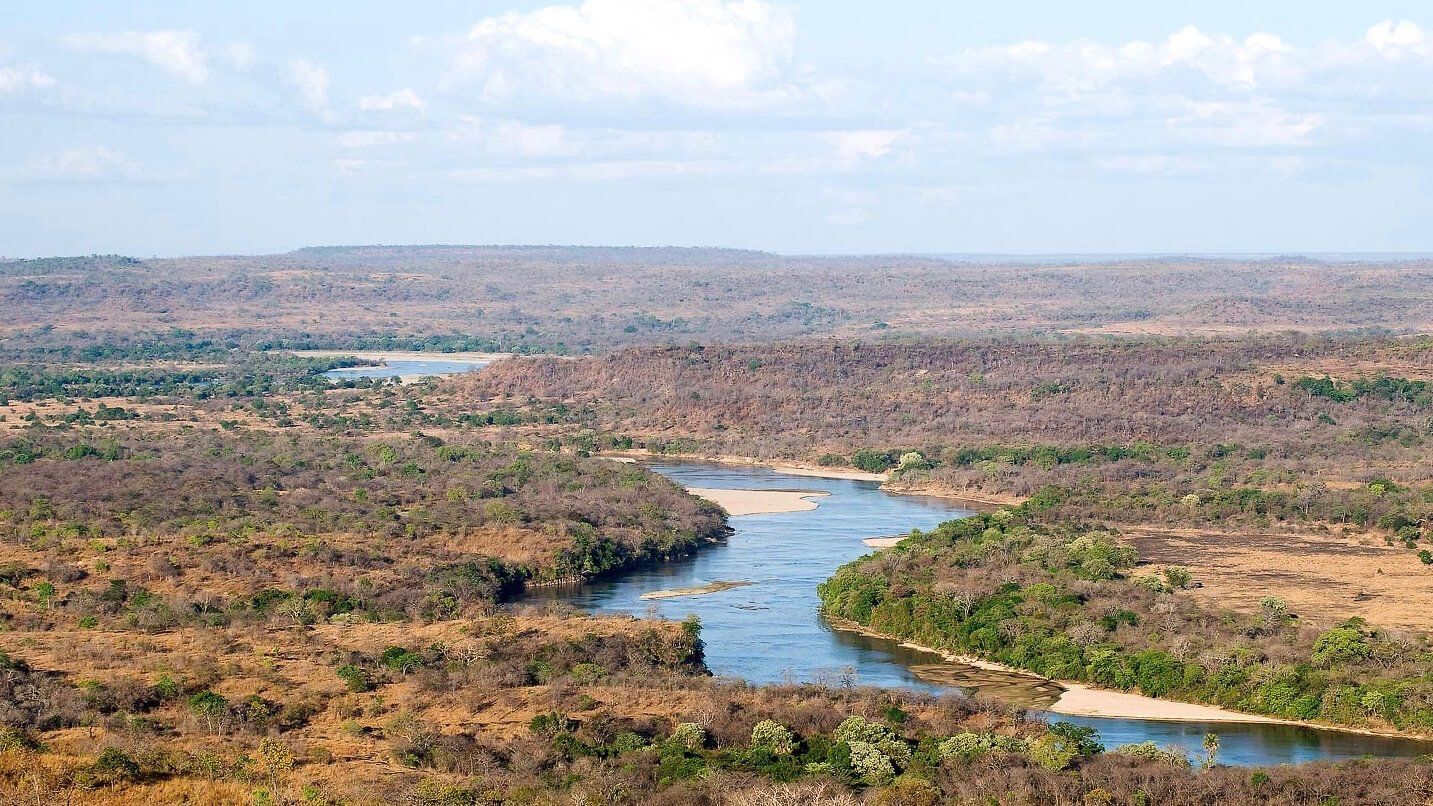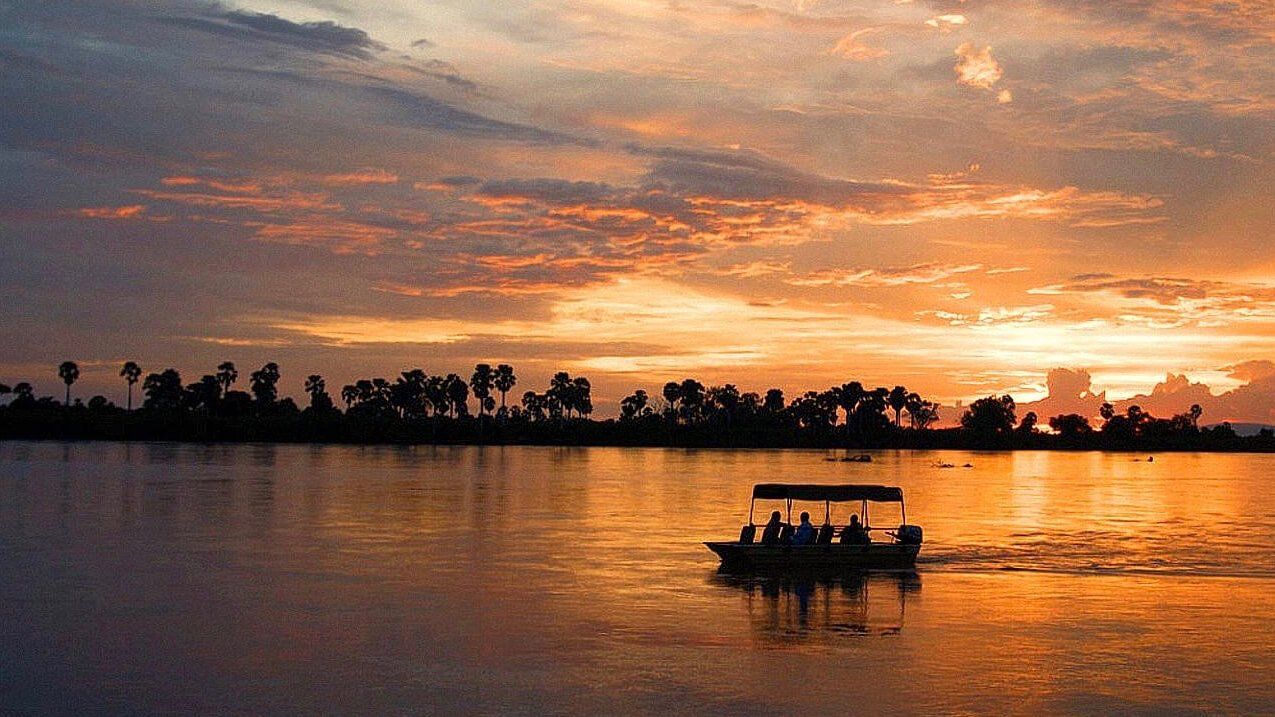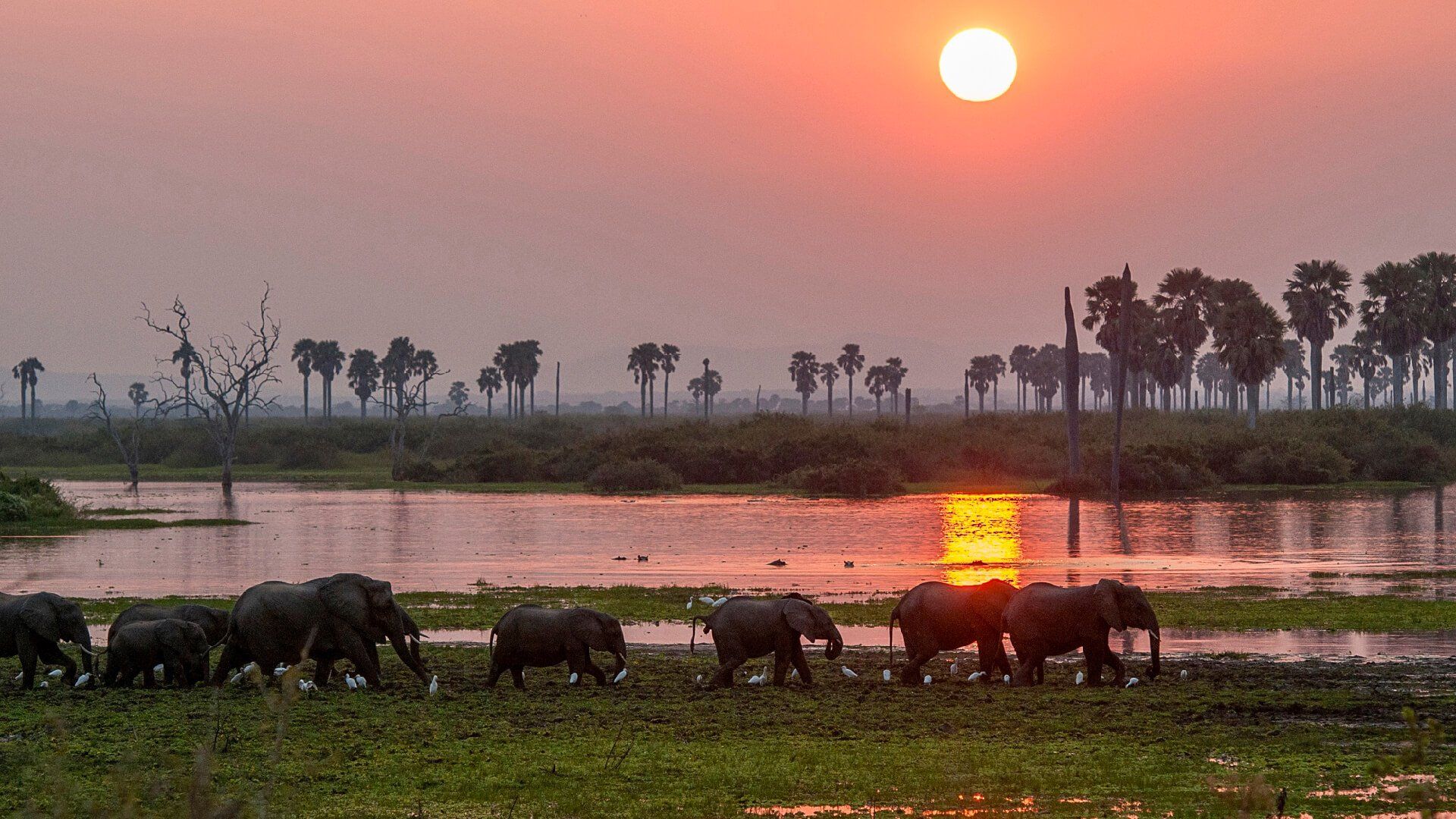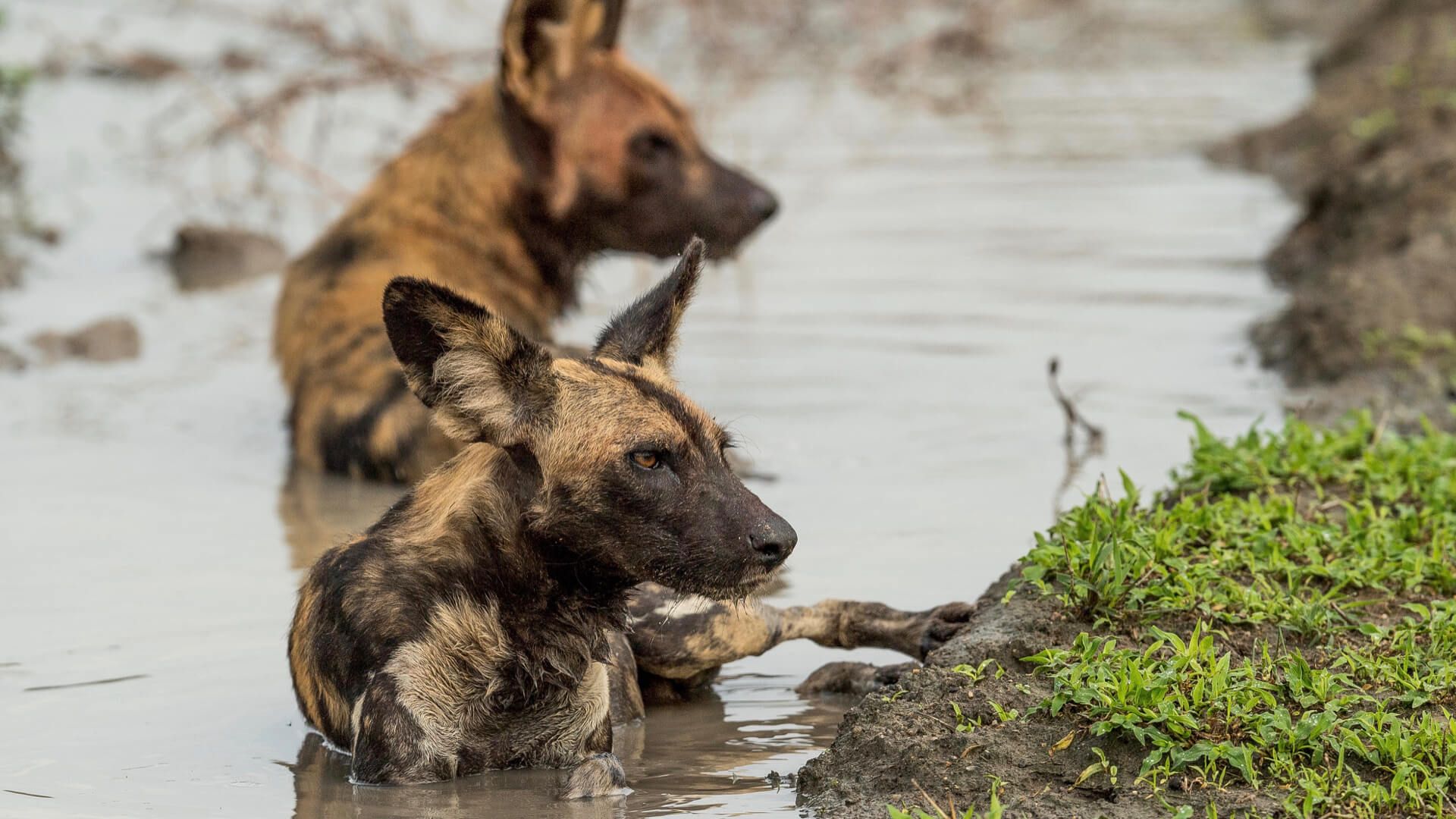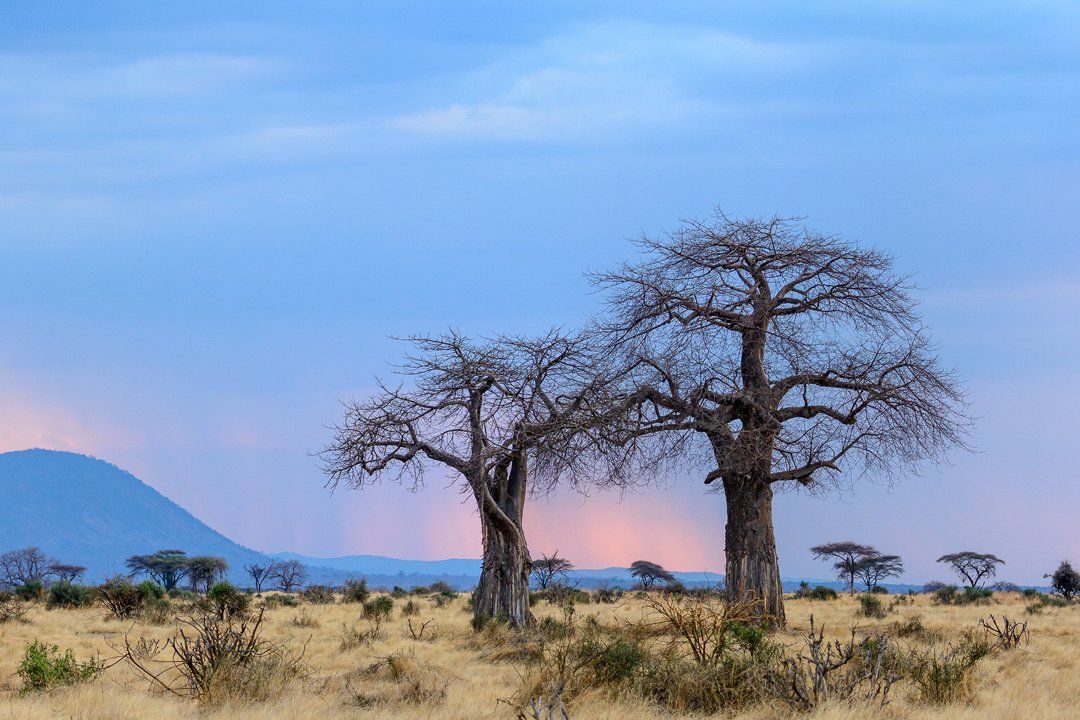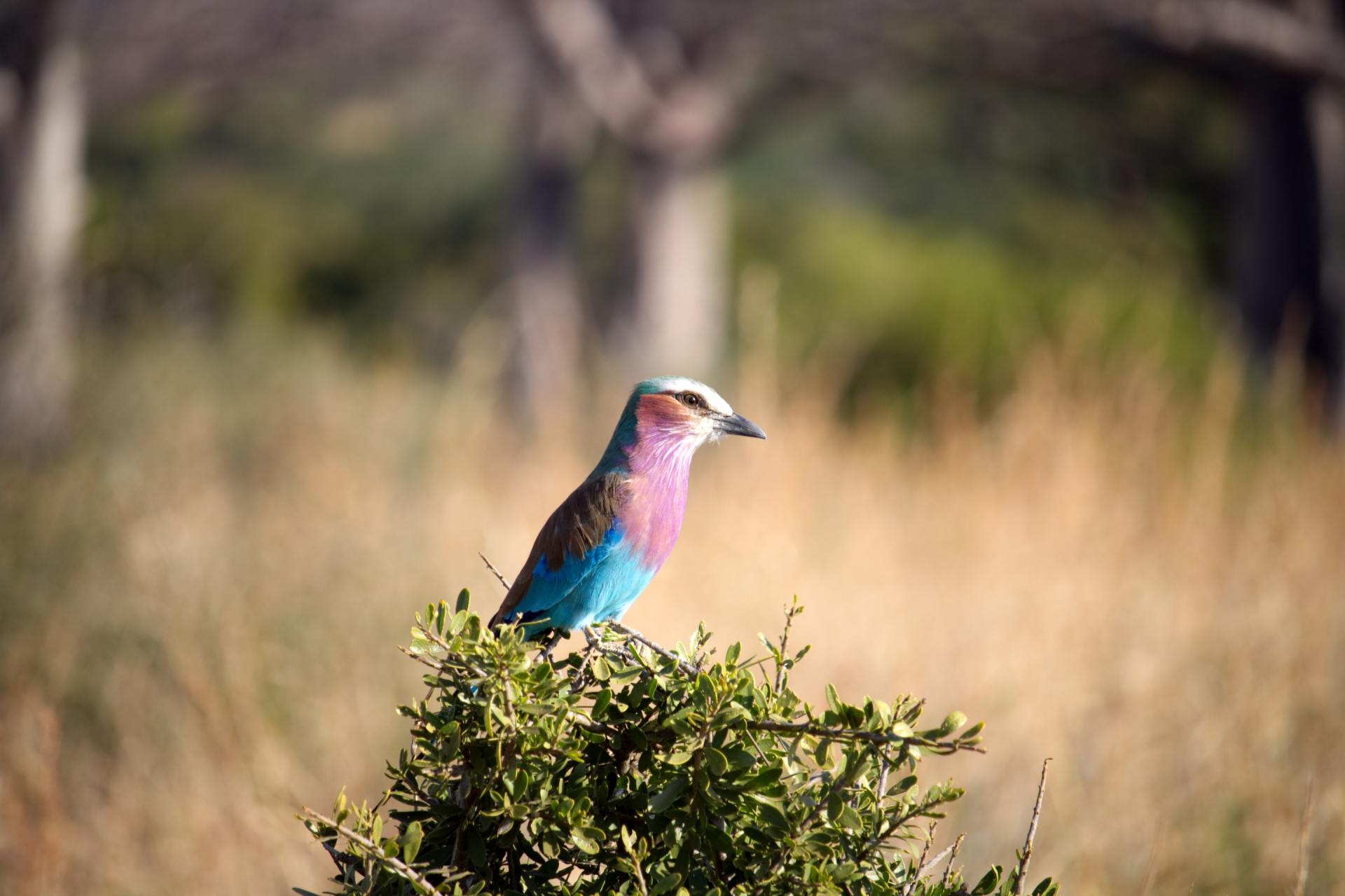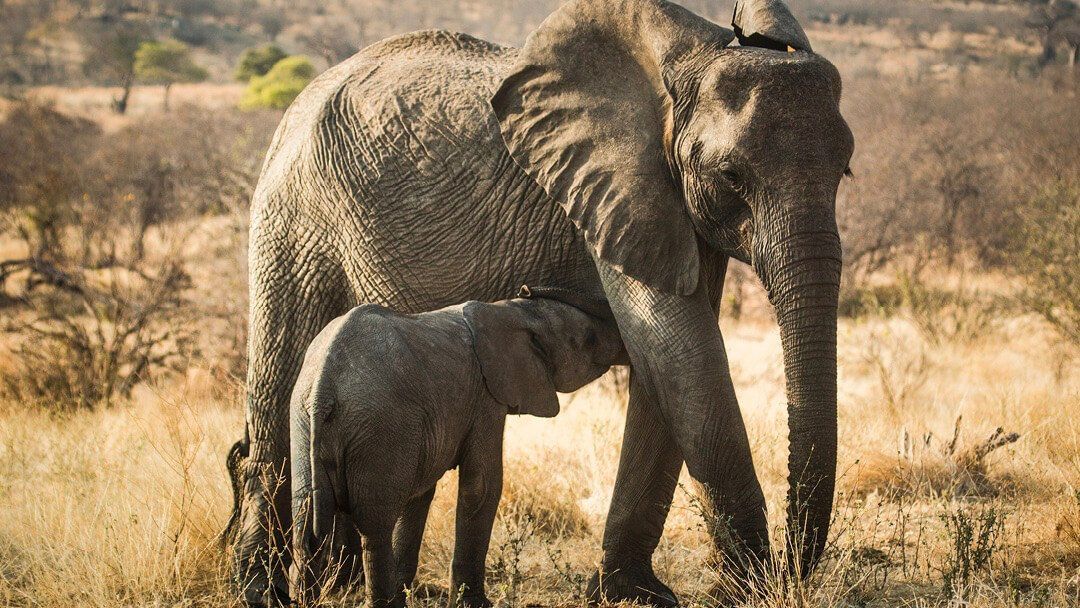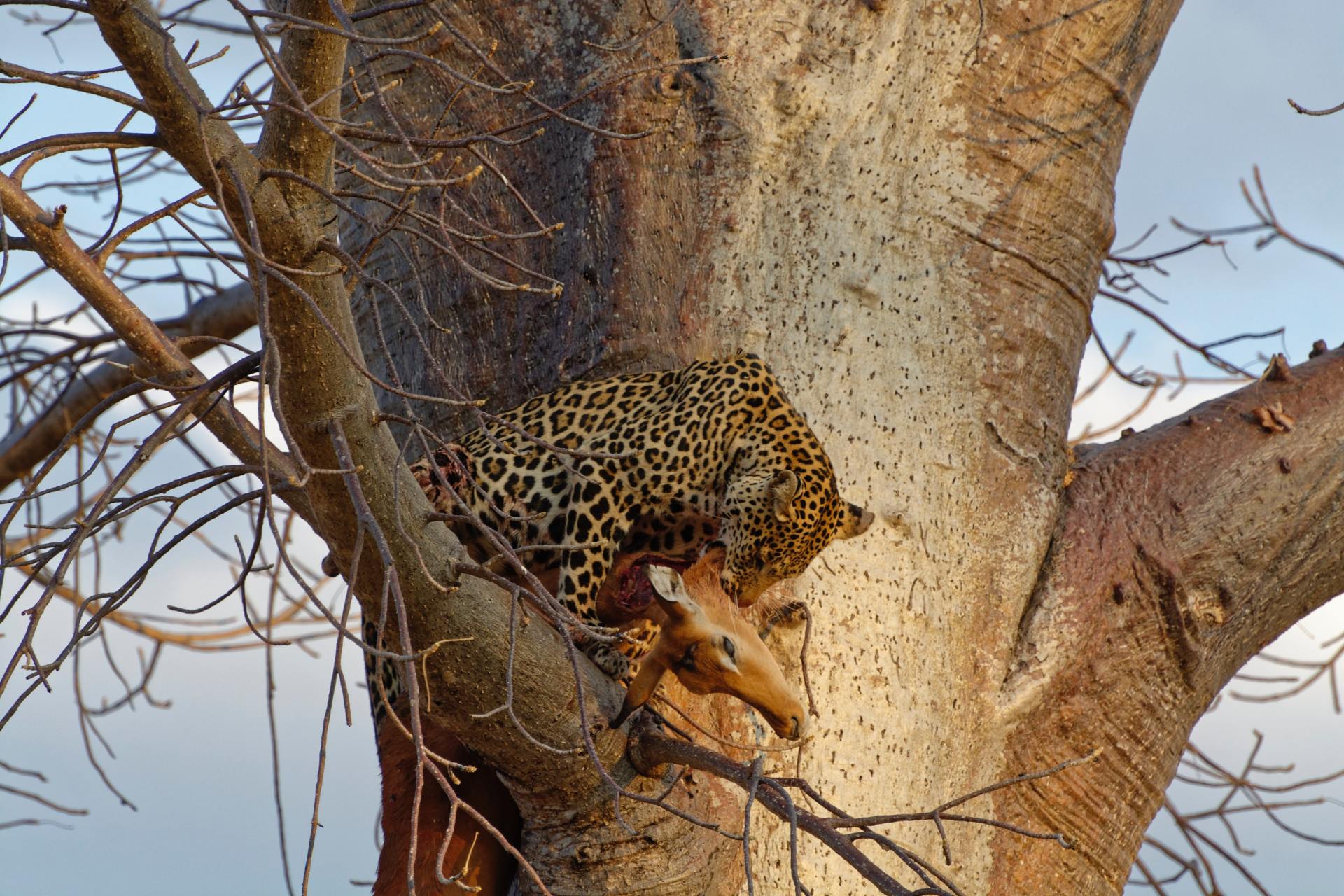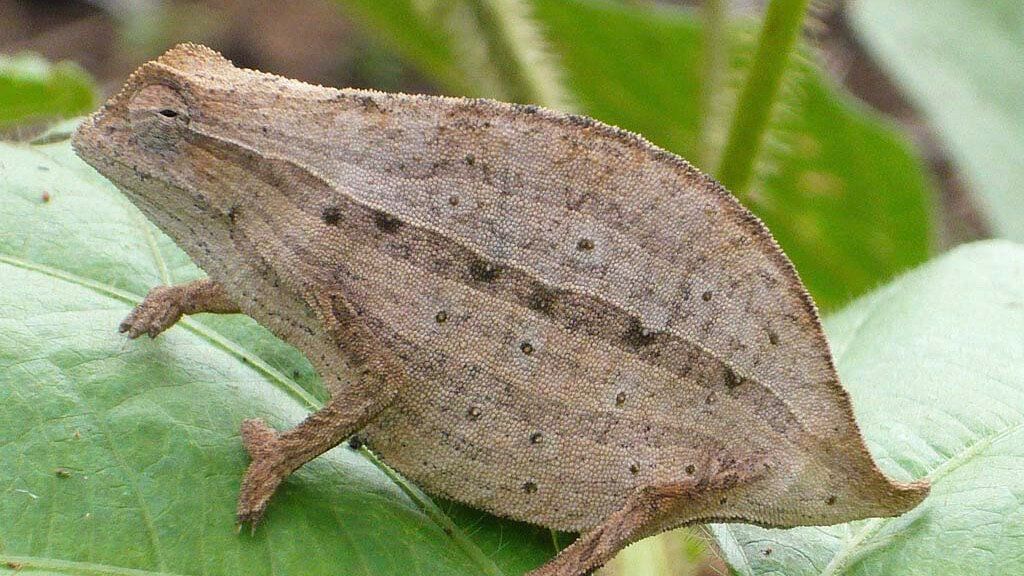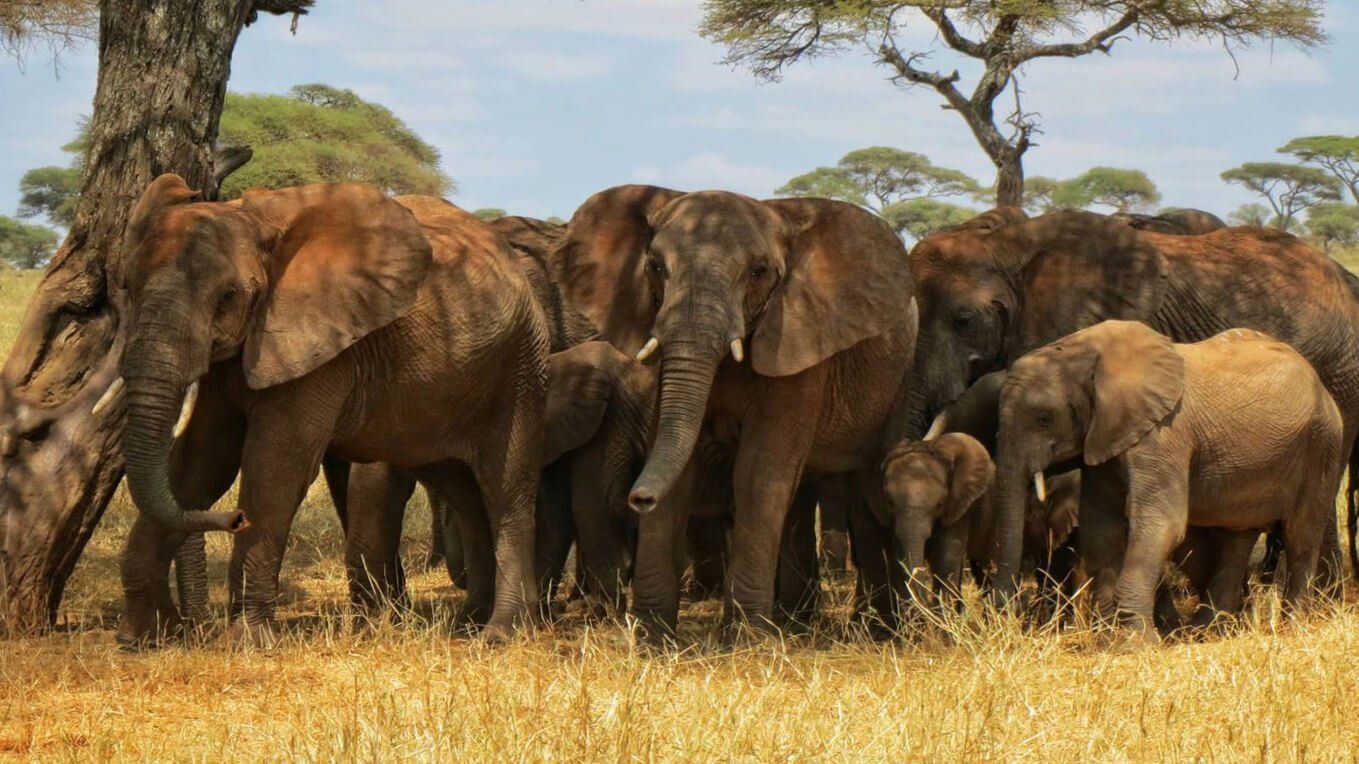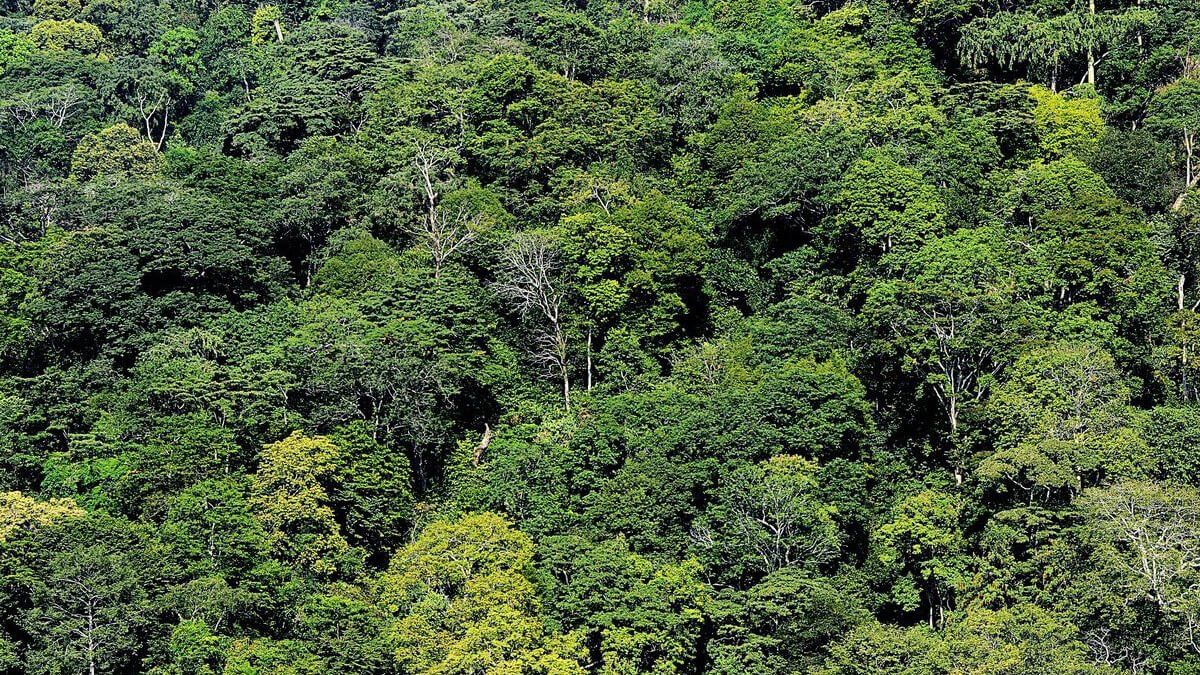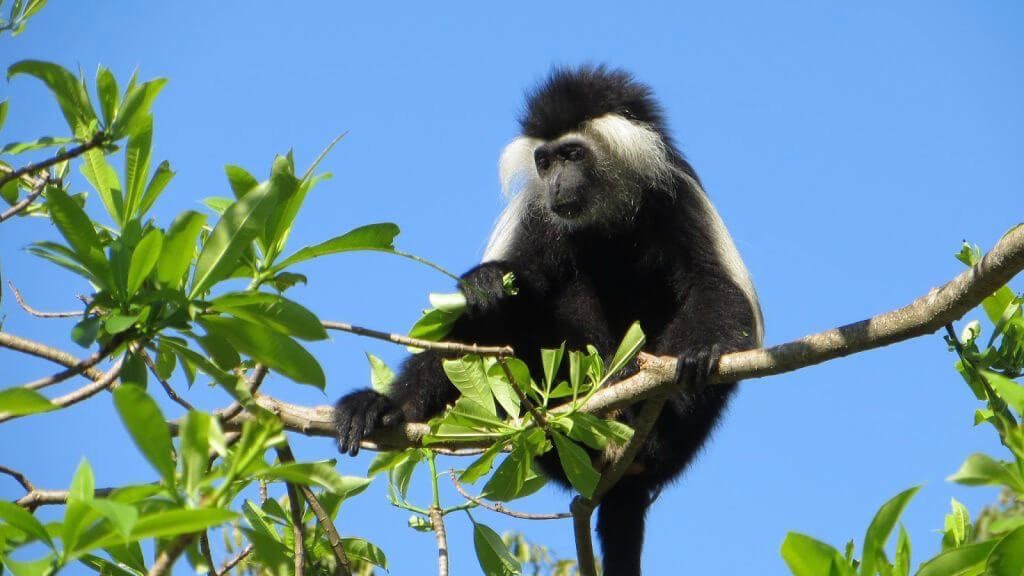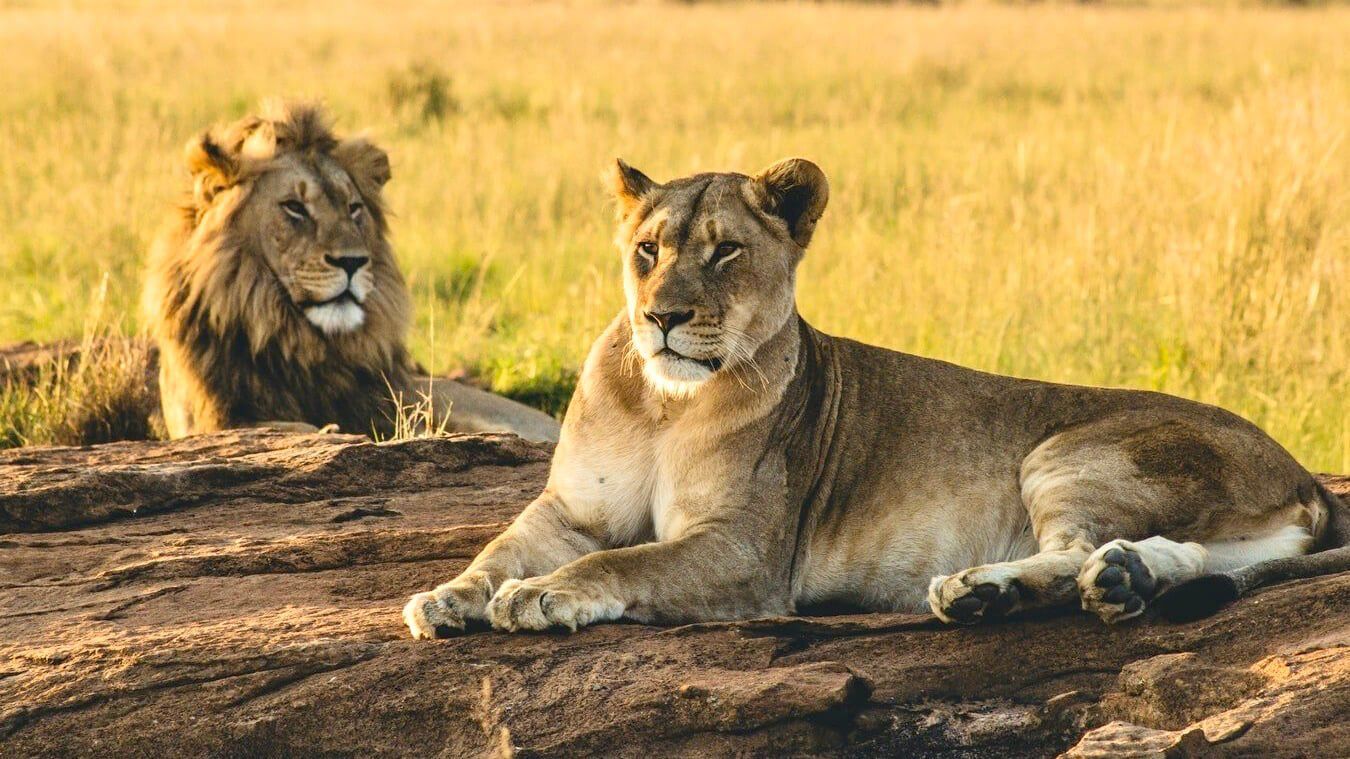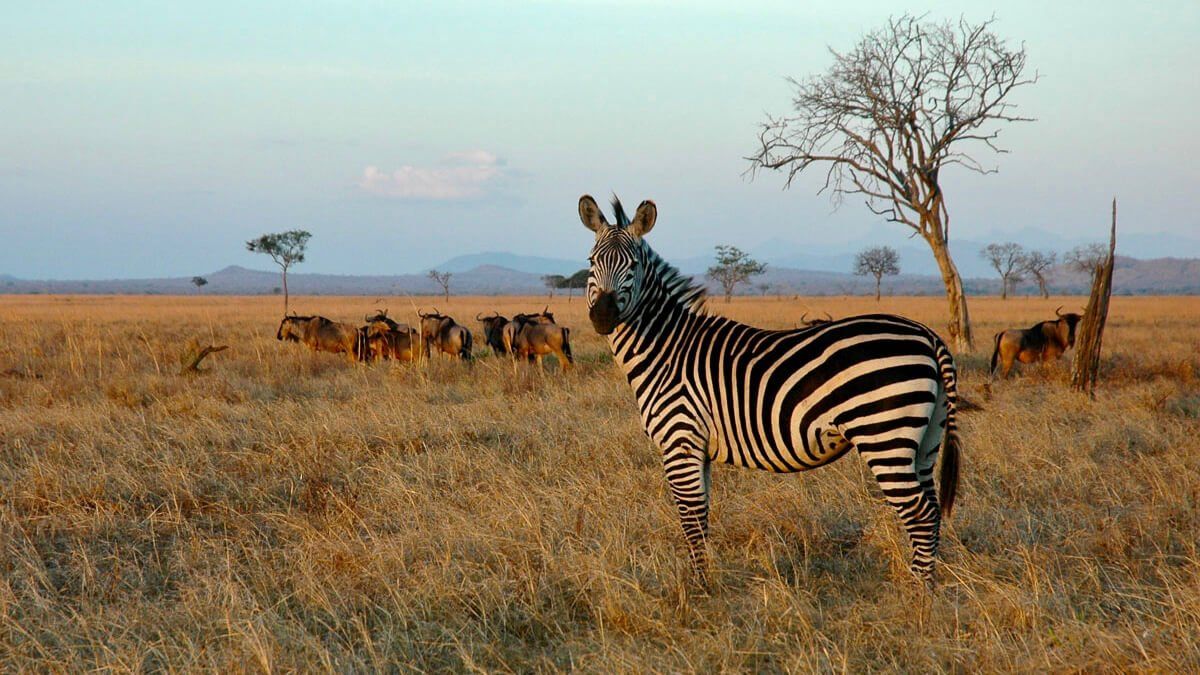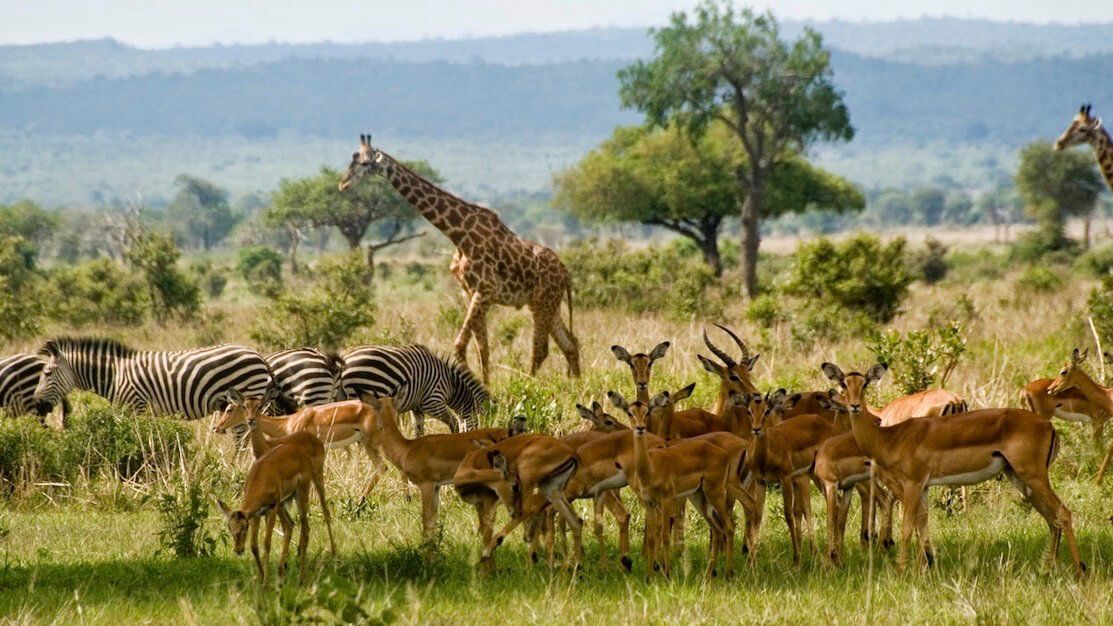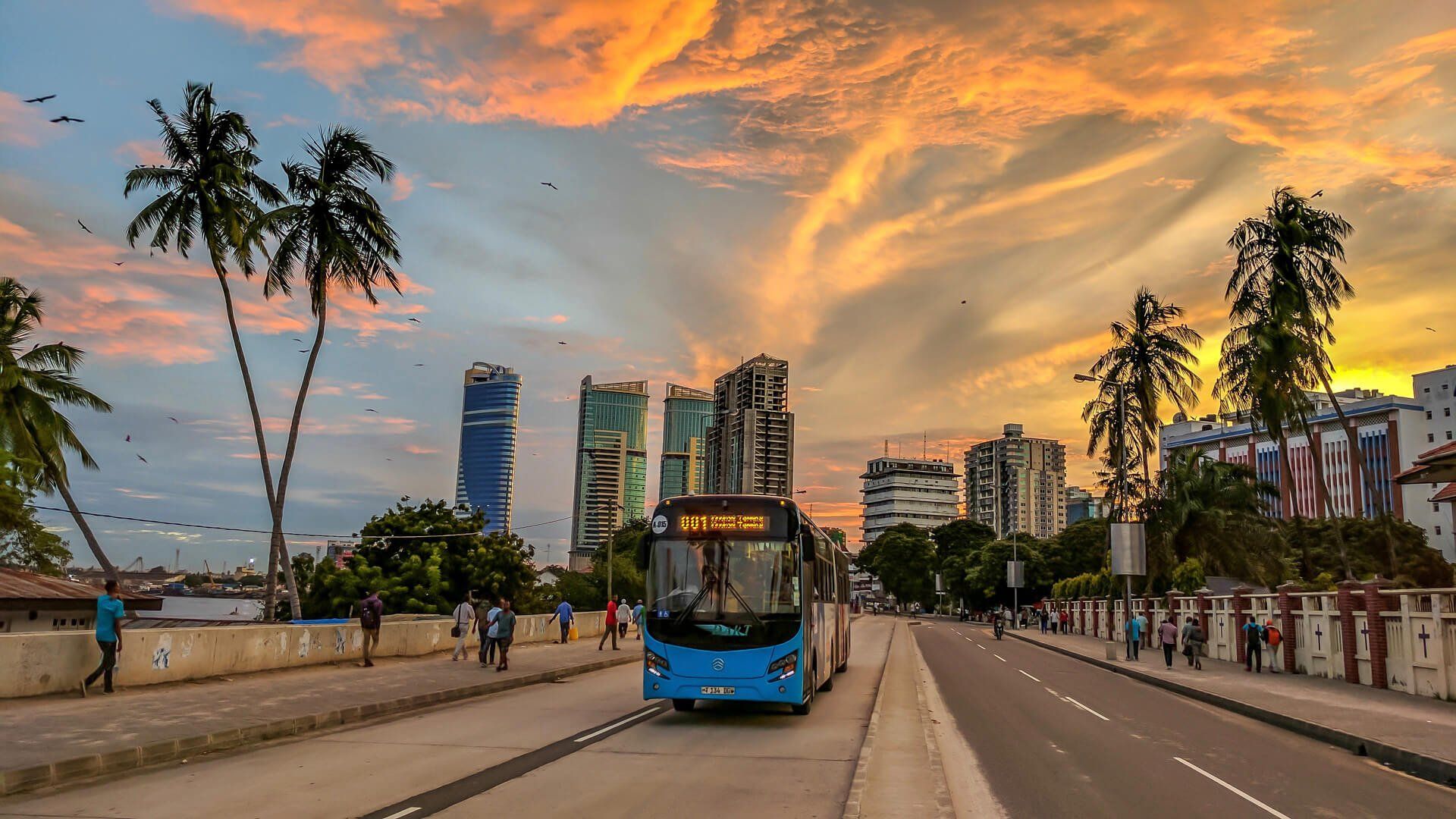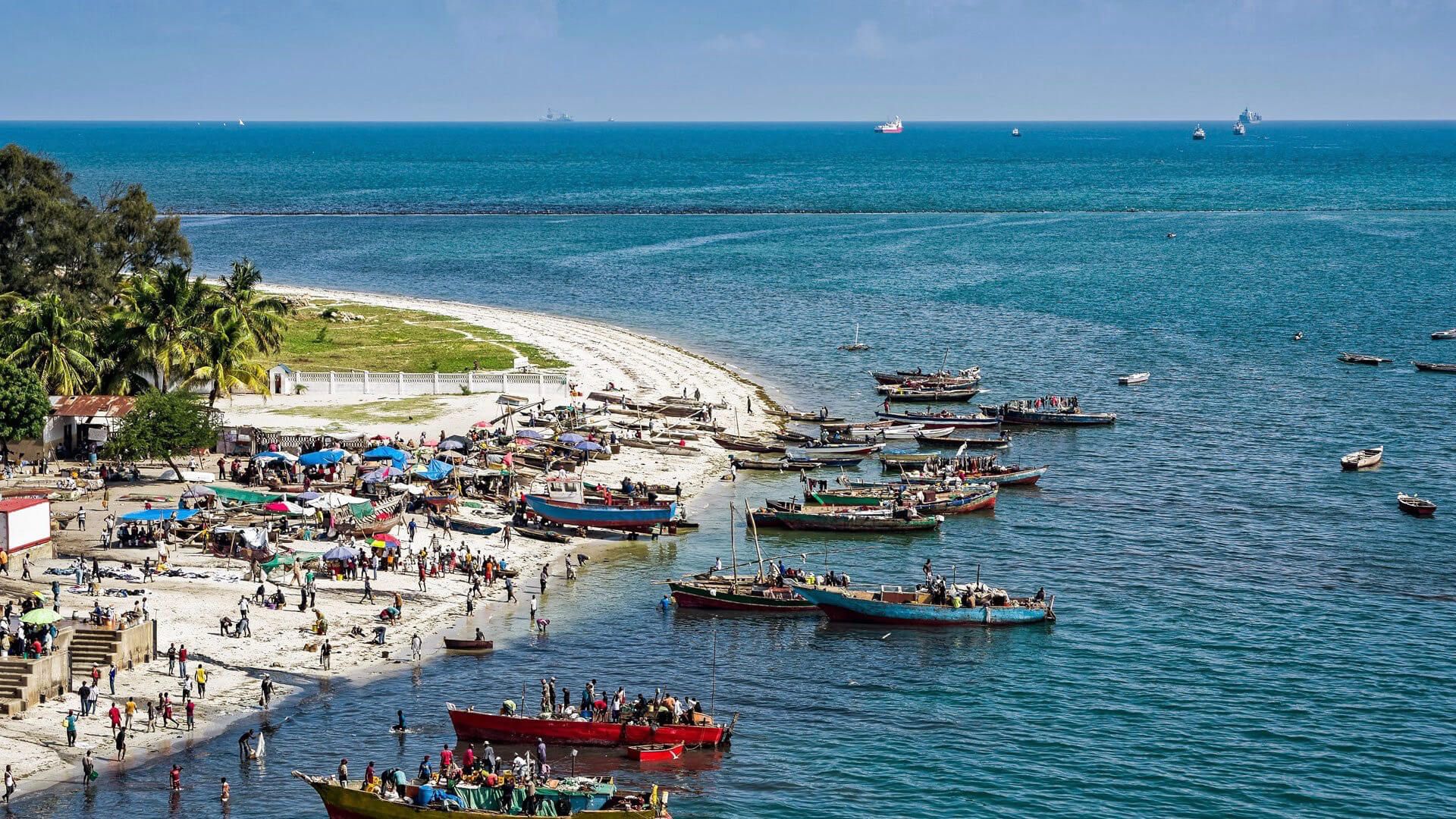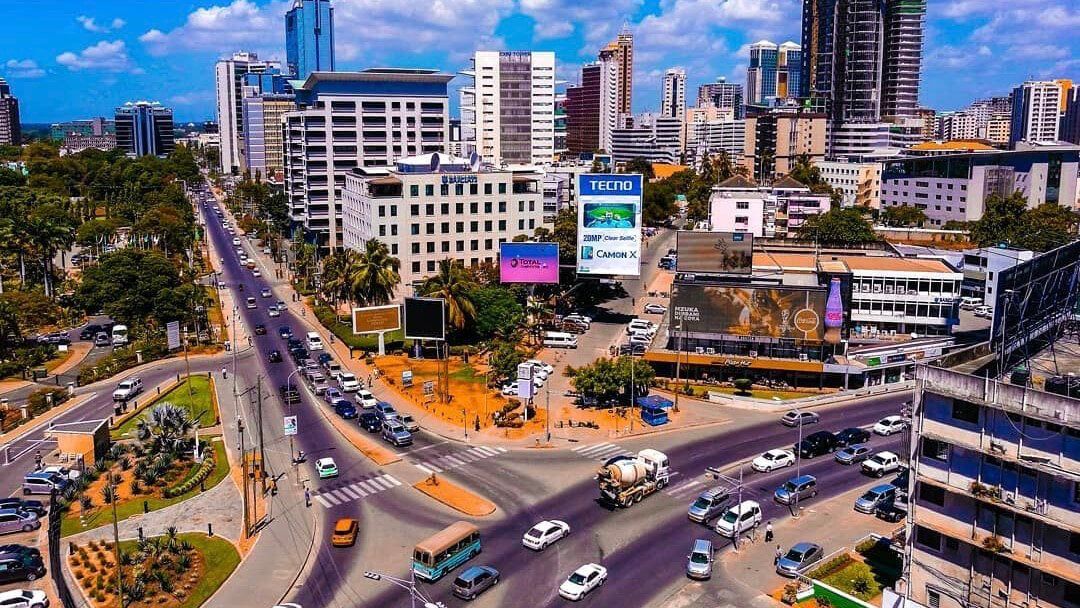TANZANIA SOUTHERN CIRCUIT
Nyerere National Park GAME RESERVE
This reserve was declared a World Heritage Site due to its dramatic landscapes and great diversity of wildlife. It is one of the few big game reserves that allow hiking, offering wildlife enthusiasts the chance to explore Tanzania’s pristine landscape on foot. Nyerere National Park has many diverse habitats with a mixture of Miombo woodlands, rolling hills, savannahs, rocky outcrops, swamps, lakes and rivers. The majestic Rufiji river, the largest river in Tanzania, is the lifeblood of the reserve and along with a network of many tributaries, lakes, lagoons and channels, plays a vital role in the ecosystem.
Nyerere National Park is by far the largest game reserve in Africa – it is even bigger than Switzerland!
Nyerere National Park is also home to almost 3000 lions and is considered to have half of Tanzania’s elephant population within its boundaries! It is also home to the endangered African wild dog and black rhino. Leopards are found in abundance as they prefer to live in the Miombo woodlands area.
The reserve offers a variety of activities for guest to choose from. In addition to regular game drives, visitors can go on a boat safari or walk in the footsteps of people like Hemingway during a walking safari, accompanied by an armed ranger.
-
BEST TIME TO VISIT
The period between December and March is probably the most favourable months for keen birders. April and May see the start of the long rains and due to the use of bush runways all of the camps are closed. Plan your visit to Selous in the dry season from mid-June to November as game sightings increase dramatically along the river and other water sources.
-
ACTIVITIES IN NYERERE NATIONAL PARK
GAME DRIVES
Secluded and off the beaten track, the Nyerere National Park offers visitors a slice of undisturbed wilderness, teeming with a spectacular array of fauna and flora. Game drives are offered in the cool early morning and again as the sun sets in the evenings when you're most likely to see the Big Five, a vast number of antelope species, giraffe, zebra, warthog, African wild dog and plenty more!
BOAT SAFARIS
Nyerere National Park is one of the few places in Tanzania where you do game viewing from a boat. The Rufiji river is more than a mile wide but can become fairly narrow in the dry season which means that in some areas you will share the passage with hundreds of hippos and crocodiles. There is a magnificent gorge upstream called Stigler's Gorge which can only be accessed by boat and this is one of the best river safaris you can do. You should be spoiled with views of elephants coming down to drink and bathe, lions sunning themselves on the sand and hundreds of crocodiles of all sizes.
GUIDED WALKING SAFARIS
Accompanied by an armed ranger, walking safaris can be enormously exciting and as much as anywhere else, there are areas of the Nyerere National Park where creeping rather than walking pays high dividends. The areas surrounding the lakes are home to large numbers of buffalo, elephants and hippos and a competent guide will often be able to put you in a safe position to watch these animals (as well as many others) at surprisingly close range.
BIRDING
With more than 440 species, Nyerere National Park is a perfect spot for ornithologists. The most commonly seen bird species are African spoonbills, white-fronted bee-eaters, white-headed vultures, African fish eagles, spur-winged lapwings and francolins.
FLY CAMPS
Experience a unique experience of sleeping out in the wild with only the sounds of the African bush around you, the stars being your only light. This is one of the most amazing experiences you can have on safari! The fly camping tents are made of a see-through mosquito net to offer a 360-degree view of one of the most unique settings you will ever sleep in. Camp staff set up the fly camps in advance and you can either walk there as part of your safari activity or drive there after your last game drive. Fly camping is about adventure, not a luxury. Your tent is simple, the bed is very comfortable and the crew prepare fantastic meals in the middle of the wilderness. There is a bucket shower within the outside bathroom facility.
RUAHA NATIONAL PARK
- BEST TIME TO VISIT
Keen birders should visit between December and March. April and May see the start of the long rains and due to the use of bush runways, all camps are closed. Ruaha is a typical dry season park, with the best time to see larger mammals and predators being between mid-May and December. As water becomes scarce toward the end of the dry season, game gathers around available water sources, offering unbeatable game viewing opportunities.
- ACTIVITIES IN RUAHA NATIONAL PARK
GAME DRIVES
Ruaha is a place where you can fully immerse yourself in nature. Often you won’t even see other vehicles when you go out on game drives! It is home to the largest elephant herds in East Africa and has an excellent reputation for predator sightings. All the big cats - lions, leopards and cheetahs - are there in healthy numbers. Look out for the highly endangered wild dogs and spotted hyenas, also found in Ruaha.
GUIDED WALKING SAFARIS
There's nothing quite like the exhilaration of a walking safari and Ruaha National Park is a prime spot for exploring on foot. It's the best way to experience the African bush with its varying habitats and host of mammals, reptiles, insects and birds.
BIRDING
With over 500 species of bird (both seasonal and permanent), Ruaha is a birdwatcher's paradise. The variety of birds is spectacular and includes water birds and raptors from both the south and north. The best time to visit Ruaha for bird watching is during the wet season from January to April.
UDZUNGAWA MOUNTAINS NATIONAL PARK
- BEST TIME TO VISIT
Keen birders should plan their trip for the period between December and March.
April and May see the start of the long rains and due to the use of bush runways, all camps are closed. The best time to visit Udzungwa is in the mid-June to November window.
- ACTIVITIES IN UDZUNGAWA MOUNTAINS NATIONAL PARK:
HIKING
Popular hikes include a short but steep half-day hike to Sange waterfalls and a two day climb to the top of Luhombero, Udzungwa’s highest peak.
Enjoy a half-day hike to the Sanje waterfall, which plunges 170 metres (550 feet) through a misty spray into the forested valley below. You can also take on the more challenging two-night Mwanihana trail that leads to the high plateau with its panoramic views over the surrounding sugar plantations, before ascending to Mwanihana peak, the second-highest point in the range.
BIRDING
The park has over 400 bird species. Some of them are endemic to the Eastern Arc Mountains and four of them are found only in Udzungwa. The forest partridge was discovered for the first time in 1991 and is more closely related to an Asian genus than to any other African fowl. Other common birds include Rüppell’s vultures, marabous, crowned eagles, malachite kingfishers, woodland kingfishers, silvery cheeked hornbills and trumpeter hornbills.
MIKUMI NATIONAL PARK
Mikumi is Tanzania’s fourth-largest national park. It is also the most accessible park from Dar es Salaam. With almost guaranteed wildlife sightings, it makes an ideal safari destination for those pressed for time. It is located between the Uluguru Mountains and the Lumango range and has a wide variety of wildlife that can be easily spotted.
Most visitors visit Mikumi National Park aiming to see the ‘Big Five’ (cheetah, lion, elephant, buffalo, and rhino) and they are not disappointed. Hippo pools provide close access to the mud-loving beasts and bird-watching along the waterways is particularly rewarding. Mikumi National Park borders the Nyerere National Park and Udzungwa National Park and the three locations offer a varied and pleasant safari circuit.
The open horizons and abundant wildlife of the Mkata floodplain, the popular centre piece of Mikumi, draws frequent comparisons to the more famous Serengeti Plains.
Lions survey their grassy kingdom and the zebras, wildebeests, impalas and buffalo herds that migrate across it. Look for them on the flattened tops of termite mounds and during the rains, they are often seen on perches high up in the trees. Giraffes forage in the isolated acacia stands that fringe the Mkata River - islets of shade also favoured by the Mikumi elephants.
- BEST TIME TO VISIT
The period between December and March is probably one of the best times of the year for those that are keen birders. April and May see the start of the long rains and due to the use of bush runways all of the camps are closed. The best time to visit Mikumi is in the mid-June to November window.
- ACTIVITIES IN MIKUMI NATIONAL PARK
GAME DRIVES
Criss-crossed by a good circuit of game-viewing roads, the Mkata floodplain is perhaps the most reliable place in Tanzania for sightings of the powerful eland, the world’s largest antelope. The equally impressive greater kudu and sable antelope haunt the miombo-covered foothills of the mountains that rise from the park’s borders.
BIRDING
More than 400 bird species have been recorded with colourful common residents as the lilac-breasted roller, yellow-throated long claw and bateleur eagle joined by a host of European migrants during the rainy season. Hippos are the star attraction of the pair of pools situated 5km north of the main entrance gate, supported by an ever-changing cast of water-birds.
DAR ES SALAAM CITY
- BEST TIME TO VISIT
Dar es Salaam is located on the Tanzanian coast and has a tropical climate with relatively high temperatures and high humidity. Rainfall occurs all year round but primarily during the two rainy seasons: the short rainy season from October to December and the main/long rainy season from March to May.
- ACTIVITIES IN DAR ES SALAAM CITY
NATIONAL MUSEUM OF TANZANIA
This group of five Tanzanian museums aim to preserve and show exhibits about the history and natural environment of Tanzania. The National Museum of Dar es Salaam was established in 1934 and the group was formed when the National History Museum and Arusha Declaration Museum in Arusha, Village Museum in Dar es Salaam and Mwalimu Julius K. Nyerere Memorial Museum in Butiama united.
KIVUKONI FISH MARKET
Be there by 07h00 to enjoy the thrill of a typical fish auction. You can even request them to prepare it for you on the spot!
MSASANI PENINSULA
The is essentially a Swahili fisherman's village that has grown to be one of the wealthiest areas in Dar. The peninsula is characterised by affluent shops, restaurants and bazaars. It is also a luxury residential area for most politicians and expatriates. Hangout with friends and colleagues at high end entertainment spots and sundowners by the bay.
ST JOSEPH’S CATHEDRAL
This is a gothic church facing the harbour along Sokoine drive. The church was built in the early 20th century by German missionaries. Currently it is the head parish of the Dar es Salaam archdiocese.
DAR ES SALAAM ZOO
Visit Dar es Salaam Zoo to view wildlife and enjoy different activities. It is one of the largest zoos in East African. It offers a variety of animals including lions, antelopes, crocodiles, hyenas, leopards and zebras. Explore the Nguva river and see different bird species. Ride on camel or horse back while interacting with the monkeys. The zoo also has a swimming pool for children and teenagers below the age of 15 years.
PORT OF DAR ES SALAAM
This is Tanzania’s main port and handles over 90% of the country's imports and exports. Visit the Port of Dar es Salaam during your historical tour and learn how the port gave birth to the city.
MWENGA CARVERS MARKET
It is located in the Sinza area in Dar es Salaam, opposite the Village Museum. Mwenge Carvers market is a great place to stock up on souvenirs. Take the time to look around as you will come across some unique and quality Tanzanian handcrafts. Mwenge Carvers Market is a great source of traditional African sculptures and crafts.
MBEZI BEACH
Mbezi is an administrative ward in Kinondoni district, Dar es Salaam. It is surrounded by the Mbezi beach, a fairly pretty and clean beach that attracts several rich Tanzanians as well as tourists. It is situated approximately 20 km north of the city centre of Dar es Salaam between New Bagamoyo Road and the Indian Ocean. It offers a common alternative route to the Msasani Peninsular during rush hour with Silver Sands and Bahari Beach to the north. Enjoy basking in the sun, sand bathing your feet on the silky white sand as you indulge in the cool and sometimes warm breeze while watching the ocean waves. Add a little fun to the experience by going diving – the memory will make you yearn to return to this fabulous location. Even if it is just to have another swim, to sunbathe or enjoy a walk on the sandy beach.
KARIBU ART GALLERY
You can also visit the Karibu art gallery nearby. The closest shops are situated at Kawe to the south, where there are also transport connections. There are taxis at the White Sands junction in the north and it is also possible to hire bicycles.
KARIAKOO MARKET
This extensive market spans across several city blocks and houses and consist mostly of open-air stalls that sell all kinds of products ranging from farm fresh produce to clothes, shoes, bags and even live animals. Visit the Kariakoo Market for the most extensive shopping experience in Dar es Salaam. The best time to shop is early Saturday mornings.

